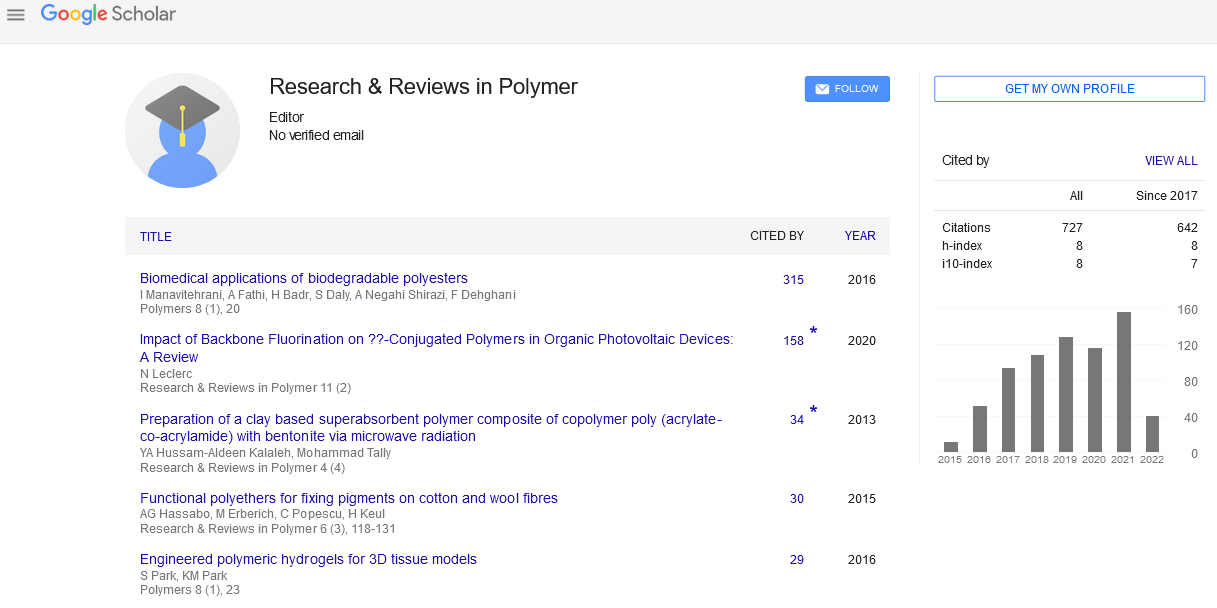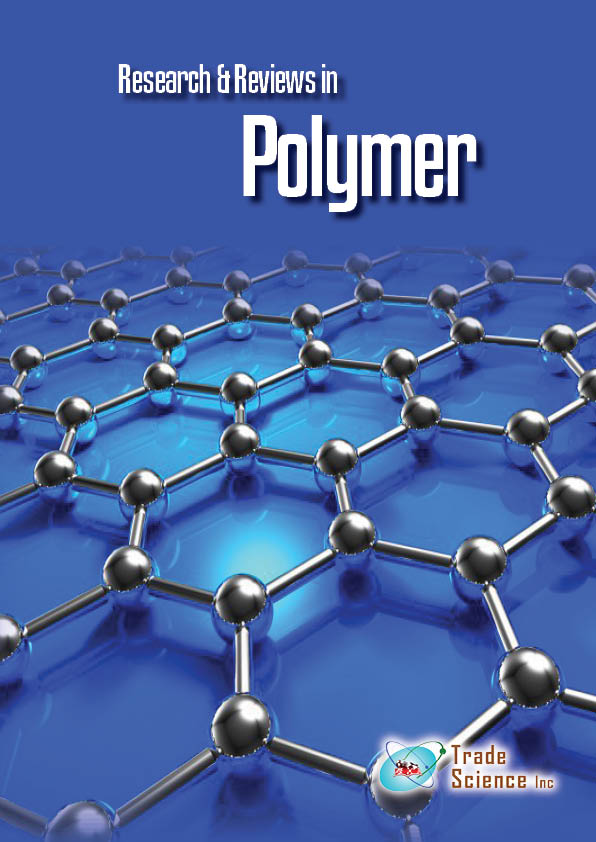Abstract
Light Curing Dental Nanocomposite Resins using Green Synthesized TiO2 Nanoparticles as Fillers
Author(s): Ramesh Chaughule, Dipika Raorane and Suhas PednekarTooth decay or dental caries are one of the common problems faced by people in all ages. A number of solutions are available to overcome the problem among which dental filling material is commonly used [1]. Amalgam has been used in dentistry since about 150 years and is still being used due to its low cost, ease of application, strength, durability, and bacteriostatic effect. The routine use of dental amalgam is gradually decreasing due to poor aesthetics for anterior restoration, mercury toxicity, and environmental consideration arising from mercury disposal, potential dental fracture, secondary caries, and marginal leakage. Increasing demand for aesthetic dentistry has led to the development of resin composite materials for direct restorations with improved physical and mechanical properties, aesthetics, and durability. Physical properties of dental composites rely greatly on the particle size and volume of filler and resin materials. E.g. the hardness, compressive strength, elastic modulus and flexural strength etc. increase while the polymerization shrinkage decreases as filler volume fraction increases [2].
In the last few years, nanotechnology has played an important role in improving clinical performance of dental resin composites. Modern contemporary dentistry has changed drastically in restorative solutions with introduction of resins resulting in ebbing out of silver amalgam. Most meaningful research in material science focuses on improvement in materials used in restoration (fillings) mainly resins and ceramics; the metals used for prosthetic solutions and also implant and other biomaterials. Dental resin nanocomposites are comprised of a mixture of the resin matrix, nanofillers, photo initiator, etc. to be filled into the cavity. The nanoscale material used in this process is in the range 0.1 to 100 nm [3]. Nanocomposites contain filler particles with sizes in nano and micrometers (hybrid in nature) are claimed to provide increased aesthetics, physical strength and durability. In order to improve mechanical properties of dental composites; the surface of hybrid TiO2 nanoparticles (NPs) is modified with coupling agent. Resin based composites are the most popular restorative materials providing very good aesthetics and a long period of good clinical performance [4]. They come up with number of advantages like good aesthetic appearance, acquires tooth like restoration, no metal content, the shade of a natural tooth, etc. As the light curing resin materials are very much convenient to use, they are in use on regular basis extensively. The commonly used resin is Bis-GMA that possesses almost the desirable properties of dental materials like natural appearance, absence of color, taste or toxic agents, etc. It shows high values of strength, surface hardness, low specific gravity, good thermal conductivity, and good shelf life as compared to other resins. At present many commercially available materials use Bis-GMA as major monomer matrix. However, due to the high viscosity of Bis-GMA (up to 1200 Pa.), it remains a challenge to add inorganic particles into the resin matrix. Thus, it is important to optimize resin content along with the filler effect on the final dental properties of resin. It seems that no single material is better enough to satisfy all its desired properties of dental composites. It is required to have a kind of material, which gives high mechanical strength, good aesthetic properties, etc.
The aim of our work is to improve dental properties of nanocomposite resins with green synthesized and hybrid titanium nanoparticles as fillers. Fillers are modified with coupling agent APTES (3-Aminopropyltriethoxysilane) and combined with organic matrix to get dental restorative nanocomposite material by using light curing method. Citrus lemon fruit peel extract was used as solvent for the synthesis of NPs. The surface modification of green synthesized hybrid TiO2 nanoparticles plays an important role to build up physical adhesion and covalent linkage of inorganic fillers and resin matrix. APTES is a universally used coupling agent that is responsible to protect fillers against fracture, to improve distribution and stress transfer from flexible organic matrix to stiffer and stronger inorganic filler particles. It also decreases water intake capacity of composites and minimizes wear. In addition, C=C functional group in APTES modified hybrid TiO2 takes part in polymerization process while curing. The result shows that an increase in filler content increases the mechanical properties of resin material significantly such as compressive strength, flexural strength, and elastic modulus etc. Polymerization shrinkage decreases when compared with the resin material with no filler content. These results are compared with the light curing resins available in the market and show enhancement in dental properties after addition of fillers. TiO2 is white in color, self-cleaning, and antimicrobial in nature.
A comparative study is comprised of the fabrication of light curing restorative composite materials by incorporating different fillers with varying wt%, varying resin material composition so as to determine optimal dental restoration [5]. It was observed that the experimental light curing nanocomposites with 5 wt% nanohybrid surface modified filler particles with BisGMA (60 wt%), TEGDMA (20 wt%) and UDMA (20 wt%) resin composition provided increased physical strength and durability with higher compressive stress. In addition, the dental property, such as polymerization shrinkage (PS) was decreased as expected.
The development of such biocompatible materials in the field of restorative dentistry having aesthetic properties has great potential for treating tooth decay and its prevention.

